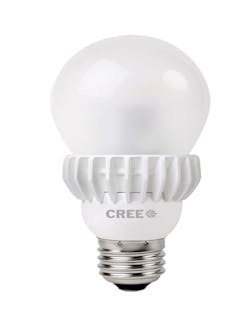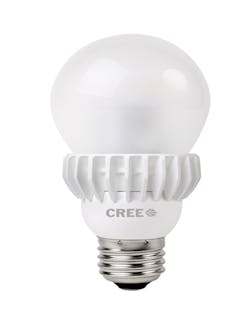Now It Comes to Light: The Lightbulb Industry Was Once A Cartel
In “The Great Lightbulb Conspiracy,” Markus Krajewski wrote that in 1924 a group of leading international businessmen gathered in Geneva for a meeting that would alter the lighting world for decades to come. They were representatives from the major lightbulb manufacturers:
· Osram (Germany)
· Philips (Netherlands)
· Compagnie des Lampes (France)
· General Electric (United States)
This group founded the Phoebus cartel, whose goal was to control the worldwide incandescent lightbulb market. By 1925 the cartel established a limit of 1,000 hours for a household bulb. This was a reduction from the 1,500 to 2,000 hours that had previously been common. Krajewski noted that “Cartel members rationalized this approach as a trade-off: their lightbulbs were of a higher quality, more efficient, and brighter burning than other bulbs. They also cost a lot more. Indeed, all evidence points to the cartel’s being motivated by profits and increased sales, not by what was best for the consumer. In making a lightbulb with a relatively short life span, the cartel invented the industrial strategy now known as “planned obsolescence.” The goal of the global lightbulb cartel was to engineer shorter-lived lamps, with samples regularly checked to ensure they conformed to cartel standards.
Krajewski said “it wasn’t just a matter of making an inferior or sloppy product; anybody could have done that. But to create one that reliably failed after an agreed-upon 1,000 hours took some doing over a number of years.” By striving for lower lifetimes than were actually possible the cartel systematically reversed decades of progress.
The business of shortening the lifetime of bulbs was followed as seriously as earlier researchers who worked at lengthening lifetime. Each factory bound by the cartel agreement had to regularly send samples of its bulbs to a Swiss testing laboratory. There, the bulbs were thoroughly checked against cartel standards. If any bulbs lasted longer or shorter than the regulated life span, the factory had to pay a fine. In addition, companies were also fined for exceeding their sales quotas, which were continually adjusted.
For nearly a decade, the cartel succeeded in its goal. The average life of a standard reference lightbulb produced in dozens of Phoebus members’ factories dropped by a third between 1926 and fiscal year 1933–34, from 1,800 hours to just 1,205 hours. At that point, no factory produced bulbs lasting more than 1,500 hours.
Although the cartel’s engineers should have been able to design a lightbulb that was both bright and long-lived, it would have interfered with members’ desire to sell more bulbs. And they did sell more bulbs, at least initially. In fiscal year 1926–27, for example, the cartel sold 335.7 million lightbulbs worldwide; four years later, sales had climbed to 420.8 million. Also, despite a drop in manufacturing costs, the cartel maintained nearly stable prices and therefore higher profit margins.
The Phoebus cartel began struggling within six years after its formation. Even as the overall market for lighting was growing, sales volume dropped by more than 20% from 1930 to 1933. The cartel was also weakened by the expiration of GE’s basic lightbulb patents in 1929, 1930, and 1933, by occasional conflicts among its members, and by legal attacks, particularly in the United States. What ultimately killed Phoebus, however, was World War II. As the members’ host countries went to war, close coordination became impossible. The cartel’s 1924 agreement, which was supposed to last until 1955, was nullified in 1940.”
Today, the lighting industry is going through its most tumultuous period of technological change since the invention of the incandescent bulb. After more than a century of dominance, these bulbs are now being phased out in favor of compact fluorescent and LED bulbs (see figure).
Figure. A 3-Way Cree® LED Bulb provides three light levels distinctly visible to the naked eye.
Krajewski said consumers are expected to pay more money for bulbs that are up to 10 times as efficient and are touted to last a long time—up to 50,000 hours in the case of LED bulbs. Whether or not these pricier bulbs will last that long is questionable, and it is unlikely that the average consumer will investigate the actual lifetime. There have been reports that LED lamps have burned out long before reaching their rated lifetimes, which might have been due to careless manufacturing. However, there is no denying that these technologically sophisticated products offer tempting opportunities for the inclusion of purposefully engineered life-shortening defects. Today’s lighting industry is larger and more diverse than it was in the 1920s and ’30s. Plus, government monitoring of collusive behavior is more vigilant. Nevertheless, the allure for businesses to cooperate in such a market is strong. And the history of the Phoebus cartel shows that it succeeded, for a few years.
What can we expect from the LED lightbulb market?
The complete article can be found here.
About the Author

Sam Davis Blog
Editor-In-Chief - Power Electronics
Sam Davis was the editor-in-chief of Power Electronics Technology magazine and website that is now part of Electronic Design. He has 18 years experience in electronic engineering design and management, six years in public relations and 25 years as a trade press editor. He holds a BSEE from Case-Western Reserve University, and did graduate work at the same school and UCLA. Sam was the editor for PCIM, the predecessor to Power Electronics Technology, from 1984 to 2004. His engineering experience includes circuit and system design for Litton Systems, Bunker-Ramo, Rocketdyne, and Clevite Corporation.. Design tasks included analog circuits, display systems, power supplies, underwater ordnance systems, and test systems. He also served as a program manager for a Litton Systems Navy program.
Sam is the author of Computer Data Displays, a book published by Prentice-Hall in the U.S. and Japan in 1969. He is also a recipient of the Jesse Neal Award for trade press editorial excellence, and has one patent for naval ship construction that simplifies electronic system integration.

